Mari's English Home Page
Last Revised: March 18, 2000
Namaste! Welcome to Mari Sekiguchi-Kurosaki's home page. I have wide interests on everything from South Asia, especially on modern history, international relations including immigration issues, new businesses, etc. of India and Nepal. I teach several courses on South Asian studies at universities in Tokyo area as a lecturer as well as editing a monthly newsletter "INDO-TSUSHIN" (India Newsletter). If you understand Japanese and have a Japanese language viewer, please visit INDO-TSUSHIN's home page also.
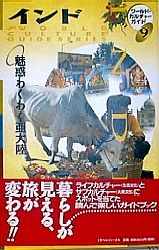
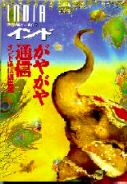
I have published a new book!  The figure to the left is a picture of our new book called "INDO: FUSHIGI WAKUWAKU ATAIRIKU" (India: The Subcontinent of Wonders). I and my friend Ms. Chihiro Koiso co-edited the book. The book was published in 1999 from a commercial publisher on travel information. I wrote a number of articles on Overseas Indians, English literature by Indian origin writers, Indian film industries, etc.
The figure to the left is a picture of our new book called "INDO: FUSHIGI WAKUWAKU ATAIRIKU" (India: The Subcontinent of Wonders). I and my friend Ms. Chihiro Koiso co-edited the book. The book was published in 1999 from a commercial publisher on travel information. I wrote a number of articles on Overseas Indians, English literature by Indian origin writers, Indian film industries, etc.
The new book is a follow-up of our 1994 publication "INDO GAYAGAYA TSUSHIN," whose image you can see to the right. This book was puplished from the same commercial publisher and sold quite well in Japan since it was the first commercial attempt in Japanese language which vividly informs about the urban sub-culture of India. In our new book, these issues were covered with latest information.
My Publication & Research:
I also wrote several articles in Japanese language on modern histroy of Himalayan region, ethnic movements in Darjeeling, migration of Indian and Nepalese origins, Asian-Indian Americans in USA, etc. These are the areas which I am currently doing research as a member of Japanese Association of South Asian Studies (JASAS).
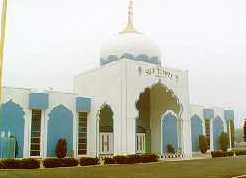
Asian-Indian Americans in USA: A major topic I am doing my research is the histroy of immigration of South Asians into USA. There were several tides of such immigration. The first one occurred in the late 19th century to the first half of the 20th century, when a number of Sikh farmers migrated to California to work as agricultural laborers. This is a picture of Sikh Gurdwara (temple), the largest one in Yuba City, California.
In November 1999, I presented my paper on Asian Indians in the US in an international workshop. Since it is written in English, please read and let me know your comments. You can download the paper below. It is in PDF format. To see and print a PDF file on your computer, you first need to install
Acrobat Reader.
Mari Sekiguchi, "Between ABCD and DCBA: Rise of the New Generation in Asian Indians in the United states",  Paper presented at the International Symposium 'South Asian Migration in Comparative Perspective: Movement, Settlement and Diaspora', November 1999, The Japan Center for Area Studies, Osaka, Japan. A proceedings book is under printing.
Paper presented at the International Symposium 'South Asian Migration in Comparative Perspective: Movement, Settlement and Diaspora', November 1999, The Japan Center for Area Studies, Osaka, Japan. A proceedings book is under printing.
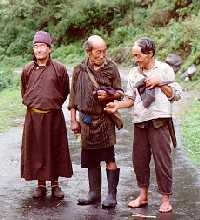
Himalayan People: This is a picture I took in a Lepcha village in the northern part of Sikkim State of India. A priest (left), a medical practitioner, or a sorcerer (middle), and a hunter (right). Cool combination, isn't it? I observed how this sorcerer practiced his medical treatment to his customer. More texts and photos to come.
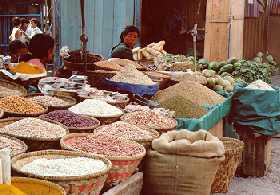
A photo taken at a bazaar in Gangtok, Sikkim, India. The shopkeeper's face is very different from that in North India. Most of them belong to Nepalese Himalayan Tribes.
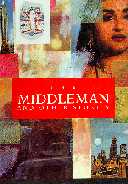
English Novels by Indian Authors: I like to read English novels written by Indian authors and ones with Indian origin like Salman Rushdie. My favorites include: Upamanyu Chatterjee, "ENGLISH AUGUST"; Vikram Chandra, "RED EARTH AND POURING RAIN" and "LOVE AND LONGINGS IN BOMBAY"; Rohinton Mistry, "SUCH A LONG JOURNEY" and "FINE BALANCE" etc. Of cource, I read Arundhati Roy's "THE GOD OF SMALL THINGS," the sensation and the BOOKER winner of 1997. Recently young writers as the secound generations of NRI in USA and UK are coming up to the field and describing their experiences and struggles between two deferent cultures.
Unfortunately, Japanese scholars interested in South Asian Studies prefer novels written in Indian languages and pay little interests to this expanding and rich literature. I make an attempt to introduce the literature to these scholars through "INDO-TSUSHIN" and other occasions.
Back to Tak & Mari's English Home
 The figure to the left is a picture of our new book called "INDO: FUSHIGI WAKUWAKU ATAIRIKU" (India: The Subcontinent of Wonders). I and my friend Ms. Chihiro Koiso co-edited the book. The book was published in 1999 from a commercial publisher on travel information. I wrote a number of articles on Overseas Indians, English literature by Indian origin writers, Indian film industries, etc.
The figure to the left is a picture of our new book called "INDO: FUSHIGI WAKUWAKU ATAIRIKU" (India: The Subcontinent of Wonders). I and my friend Ms. Chihiro Koiso co-edited the book. The book was published in 1999 from a commercial publisher on travel information. I wrote a number of articles on Overseas Indians, English literature by Indian origin writers, Indian film industries, etc.





